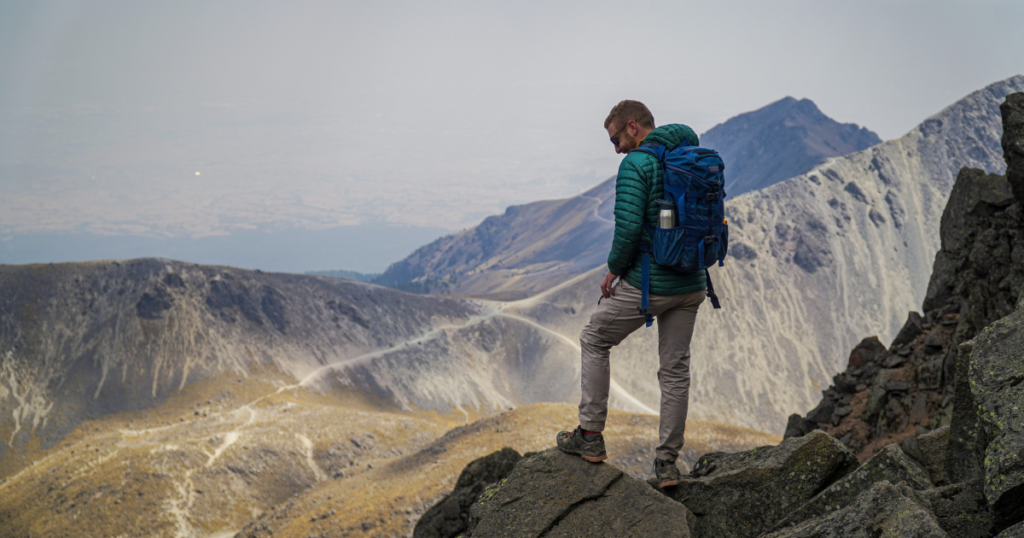Shopping for the latest and greatest backpacking gear can be an exciting experience. But don't forget about your first loves too quickly. Just because your backpack has a hole, your down jacket has lost some insulation, your rain jacket has devolved into a normal jacket, or your sleeping pad deflates during the night, doesn't mean that they need to be replaced – they can also be repaired.
Extending the lifespan of your well-worn gear means more savings to put towards gas in your tank. Any money you save can pay for campsite permits and everything else that goes into supporting your backcountry adventures. And let's not forget, repairing gear makes you look rugged/experienced to any freshly decked-out onlookers. So let's go over some home-remedy hacks to help stretch out your weathered gear another season or two.
How do you maintain a waterproof jacket?
First step wash the gear with Nikwax Tech Wash
The first step to restoring/maintaining the water repellency of your rain gear is to wash it using some Nikwax Tech Wash. This will get the old dirt and debris off your jacket/pants and help boost its overall vibrancy. After that, put another cycle on, this time using the Nikwax TX Direct Wash-In. This does the job of re-waterproofing any technical fabrics that can fit in your washing machine.
It's common for rain gear to lose its repellent properties over time. Just remember that that is expected and can be easily addressed. You don't have to rush out and buy a new one right away. Just use this multi-wash cycle method every year, if you're getting a lot of use out of your gear, or maybe every 2 – 3 years, if it's only seeing occasional action.

How to restore a down jacket
Nothing beats a good down jacket. One of my favorite pieces of gear is my orange ultralight. But these fluffy coats can easily catch on things and tear. In my case, my loveable dog was so overcome with excitement at seeing a spring snowstorm that he jumped up on me to share the news. This punctured my down jacket and caused it to leak some insulation.
Tear-Aid Patch for down jackets
Something I like to use for these types of tears is the aptly named Tear-Aid Patch. Type-A is widely applicable, and therefore good for things like down jackets, whereas Type-B is better for vinyl materials. These patches are great because they're flexible and see-through, which means it will blend in with any color. Other options that I like are made by Gear Aid, No Sew, and Tenacious Tape.
Before applying, make sure the area is clean and dry, that you've re-stuffed as much of the insulation as you could round up, and that you've trimmed off any frayed fibers so that the patch has a nice surface to stick to. Also, take note of the size and shape of the tear so that you can cut an appropriate patch. I was dealing with a L-shaped tear, so I opted for a classic square patch to thoroughly and evenly cover it.

How to fix holes in a backpack
It's natural for gear to get some battle scars, especially when hiking through rough-and-tumble areas, and especially when your camera guy jams a tripod in the backpack you lent him for a shoot in canyon country. If you put something hard next to an outer layer that's going to face abrasion, then holes will inevitably develop.
Contact the manufacturer for complicated backpack repairs
If you're facing down a complicated repair then consider contacting the manufacturer for a potential warranty claim. A lot of environmentally conscious brands, and/or brands who stand by their quality, will take items back on a reasonable timeline if there was a clear defect, or if it's a manageable fix. Small things like buckles or straps can often be dealt with at your local outdoorsy store (REI, MEC, etc.). So before you throw out your pack, or any other high-end gear in the landfill, consider looking into warranty/repair options.
How to patch small holes in the backpack
In the case of my tripod-induced holes, I simply opted to patch it myself. I did so from the inside, which can make for a more sustainable and aesthetically pleasing seal. Later, if I need a little extra oomph, I can add more patches on the outside too. Since this backpack's fateful last adventure was in the desert, I definitely needed to clean the area so that it would allow for a nice adhesive seal. To do this, I used an alcohol wipe (Wet Ones type deal). Next, I cut a generous-sized path and rounded off the corners to reduce the likelihood of it peeling off.

How to fix a leaking sleeping pad
My trustee cameraman's attempted sabotage spilled over to my inflatable sleeping pad. I lent it to him, for one night!, and it promptly sprung a pinprick leak. Thankfully, this too is common. The hardest part is actually finding the hole, but then patching it is easy. To accomplish this first task, fully inflate your mattress and then feel around/listen for the pesky air jet.
Seams and the nozzle are places to check
Remember to examine the seams and the nozzle, as they can often be the leaky culprits. If you've searched high and low and still can't find the source, you can apply some water and soap to the suspected general area. This will change the sound and even create a little bubble. My pad was so stubborn that I actually had to take it into the bathtub to locate the tiniest of holes (that sounds weird but you know what I mean!). Once you find it, make a little marker dab so that you don't immediately lose sight of it.
Patch kits and Aquaseal
For the actual repair, you can continue to use any or all of the patch brands I've previously cited, plus, I've found Aquaseal to be quite useful, or you may find that your sleeping pad came with its own little patch kit that is conveniently color-matched. Whatever you choose, make sure to deflate the mattress before applying the patch to ensure a more effective seal. Give it some time to fully take hold (typically 1 – 2 hours, but as much as 8 -12 hours) before you jump back into using your pad, jackets, or any of the gear we've discussed.
Creative fixes on the fly
I like to bring a patch kit with me into the field, but if you're ever in a pinch, you can get pretty creative with your temporary repairs. I once used a Band-aid to slow the leak in my sleeping pad, just so I could get through the night. It may not sound like much, but that saved me from having to reinflate it every 1 – 2 hours, and instead bought me a solid 4 – 6 hours stretch.
These are just a few potential repairs that I thought would have immediate and broad appeal. There are plenty of other hacks we could get into, which may even pop up on a future list. Let me know if there's anything you need help fixing, or any solutions you've come up with to extend the lifespan of your prized backpacking gear.
I hope you enjoyed this article. For more information, check out all my gear reviews and tips on BackpackingTV.





